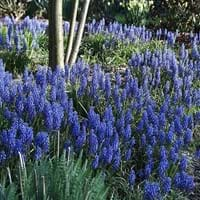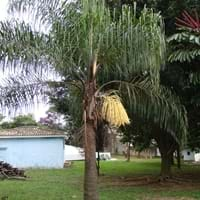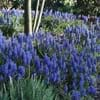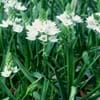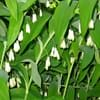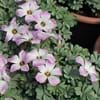Life Span
Perennial
Annual
Type
Bulb or Corm or Tuber
Palm or Cycad
Origin
Mediterranean, Southeastern Asia
South America, Argentina, Brazil
Types
Not available
Not Available
Habitat
Fields, Open areas, Terrestrial
Forest edges
USDA Hardiness Zone
Not Available
7-15
AHS Heat Zone
Not Available
12-6
Sunset Zone
21,22
H1, H2, 12, 13, 15, 16, 17, 19, 20, 21, 22, 23
Habit
Clump-Forming
Upright/Erect
Minimum Height
Not Available
Minimum Width
Not Available
Flower Color
White, Yellow, Blue, Purple, Pink, Olive, Blue Violet
White, Ivory
Flower Color Modifier
Bicolor
Bicolor
Fruit Color
Brown, Black
Orange
Leaf Color in Spring
Not Available
Dark Green
Leaf Color in Summer
Light Green
Dark Green
Leaf Color in Fall
Several shades of Green
Dark Green
Leaf Color in Winter
Light Green
Dark Green
Leaf Shape
Narrow
Long Linear
Plant Season
Not Available
Spring, Summer, Fall, Winter
Sunlight
Full Sun, Partial Sun
Full Sun, Partial Sun
Growth Rate
Not Available
Very Fast
Type of Soil
Not Available
Loam, Sand
The pH of Soil
Not Available
Acidic, Neutral
Soil Drainage
Well drained
Well drained
Bloom Time
Not Available
Summer
Tolerances
Drought
Wet Site
Where to Plant?
Container, Ground, Pot
Ground
How to Plant?
From bulbs, From Rhizomes, Seedlings
Seedlings, Transplanting
Plant Maintenance
Medium
Medium
Watering Requirements
Get enough water whenever the soil is dry, Keep the ground moist but not water-logged, Keep the Soil well drained
Does not require lot of watering, Use and maintain water-efficient soaker hoses, Use Mulches to help prevent water loss during hot and windy weather, Water in morning to avoid prompting diseases, Water twice a day in the initial period
In Summer
Lots of watering
Lots of watering
In Spring
Moderate
Moderate
In Winter
Average Water
Average Water
Soil pH
Not Available
Acidic, Neutral
Soil Type
Not Available
Loam, Sand
Soil Drainage Capacity
Well drained
Well drained
Sun Exposure
Full Sun, Partial Sun
Full Sun, Partial Sun
Pruning
Remove damaged leaves, Remove dead branches, Remove dead leaves
Cut or pinch the stems, Prune for shortening long shoots, Remove dead or diseased plant parts
Fertilizers
All-Purpose Liquid Fertilizer
All-Purpose Liquid Fertilizer, Fertilize before watering, fertilize in growing season
Pests and Diseases
Armored scales, Crown rot, Slugs
Fungal Diseases
Plant Tolerance
Drought
Wet Site
Flower Petal Number
Single
Single
Foliage Texture
Medium
Bold
Foliage Sheen
Glossy
Glossy
Attracts
Bees, Butterflies
Birds
Allergy
Diarrhea, Itchiness, Skin irritation, Stomach pain, Vomiting
Asthma
Aesthetic Uses
Cottage Garden, Landscape Designing
Not Available
Beauty Benefits
Not Available
Not Available
Environmental Uses
Air purification
Air purification
Medicinal Uses
Diuretic, Stimulates new cell growth
Not Available
Part of Plant Used
Buds, Flowers
Fruits, Leaves
Other Uses
Traditional medicine, Used for fragrance
Cattle Fodder
Used As Indoor Plant
Yes
No
Used As Outdoor Plant
Yes
Yes
Garden Design
Container, Cutflower, Mixed Border, Rock Garden / Wall
Feature Plant, Street Trees, Tropical
Botanical Name
MUSCARI
SYAGRUS romanzoffiana
Common Name
Grape Hyacinth
Queen Palm
In Hindi
अंगूर जलकुंभी
queen palm
In German
Traubenhyazinthen
Königin palme
In French
Muscari
reine palme
In Spanish
Muscari
palma reina
In Greek
grape hyacinth
βασίλισσα φοίνικες
In Portuguese
Muscari
palm rainha
In Polish
Szafirek
królowa palmowy
In Latin
Muscari
regina palmarum
Phylum
Tracheophyta
Tracheophyta
Class
Magnoliopsida
Liliopsida
Order
Asparagales
Arecales
Family
Asparagaceae
Arecaceae
Clade
Angiosperms, Monocots
Angiosperms, Commelinids, Monocots
Tribe
Not Available
Cocoeae
Subfamily
Scilloideae
Arecoideae
Difference Between Grape Hyacinth and Queen Palm
If you are confused whether Grape Hyacinth or Queen Palm are same, here are some features about those plants to help you choose better. Many people think that these two plants have the same characteristics, but one can see Grape Hyacinth and Queen Palm Information and learn more about it. Fertilizers required for proper growth of Grape Hyacinth are All-Purpose Liquid Fertilizer, whereas for Queen Palm fertilizers required are All-Purpose Liquid Fertilizer, Fertilize before watering and fertilize in growing season. Hence, one should know the basic difference between Grape Hyacinth and Queen Palm if you are planning to have them in your garden to enhance its beauty.
<
Flowering PlantsImportance of Grape Hyacinth and Queen Palm
Want to have the most appropriate plant for your garden? You might want to know the importance of Grape Hyacinth and Queen Palm. Basically, these two plants vary in many aspects. Compare Grape Hyacinth and Queen Palm as they differ in many characteristics such as their life, care, benefits, facts, etc. Every gardener must at least have the slightest clue about the plants he wants to plant in his garden. Compare their benefits, which differ in many ways like facts and uses. The medicinal use of Grape Hyacinth is Diuretic and Stimulates new cell growth whereas of Queen Palm is Not Available. Grape Hyacinth has beauty benefits as follows: Not Available while Queen Palm has beauty benefits as follows: Not Available.
Compare Facts of Grape Hyacinth vs Queen Palm
How to choose the best garden plant for your garden depending upon its facts? Here garden plant comparison will help you to solve this query. Compare the facts of Grape Hyacinth vs Queen Palm and know which one to choose. As garden plants have benefits and other uses, allergy is also a major drawback of plants for some people. Allergic reactions of Grape Hyacinth are Diarrhea, Itchiness, Skin irritation, Stomach pain and Vomiting whereas of Queen Palm have Asthma respectively. Having a fruit bearing plant in your garden can be a plus point of your garden. Grape Hyacinth has no showy fruits and Queen Palm has showy fruits. Also Grape Hyacinth is not flowering and Queen Palm is not flowering . You can compare Grape Hyacinth and Queen Palm facts and facts of other plants too.
